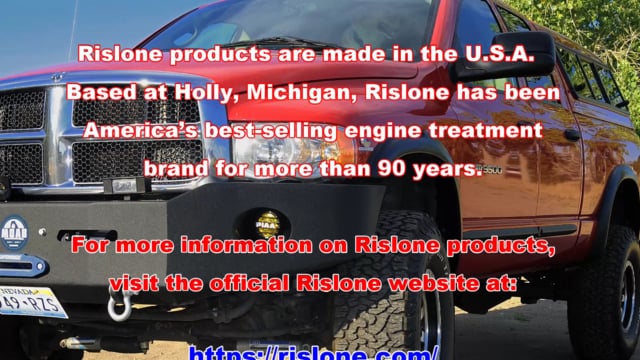Note: I began using Rislone Engine Treatment in the late 1960s as a professional light and medium duty truck fleet mechanic. I trust Rislone for quality, well-researched engine maintenance and restorative products. Rislone’s newly released diesel fuel treatment replaces up to eight individual products. The unique bottle design makes pouring simple…To protect our valued Cummins diesel engine, Rislone Complete Diesel Fuel System Treatment is my choice!—Moses Ludel
The process used to create ultra-low-sulfur diesel (ULSD) fuel reduces the fuel’s lubricating properties. Less lubricity reduces the elasticity of seals, gaskets, and other rubber or synthetic components. At the same time, the fuel holds small but potentially problematic quantities of water, which can cause corrosion as well as faster formation of gums, varnishes and carbon deposits. These ULSD issues can cause rough engine running, excess detonation rattle and knocking.
Rislone’s Diesel Fuel System Treatment will improve diesel fuel quality, which increases the fuel’s cleaning ability, adds lubrication, removes contaminants, fights corrosion and helps to prevent the fuel from gelling and going bad. Rather than buying eight individual additives, a single bottle of Rislone Complete Diesel Fuel System Treatment can serve as a ULSD sulfur substitute, an injector and complete fuel system cleaner, an upper cylinder lubricant, anti-gel cold flow improver, fuel stabilizer/conditioner and a cetane booster.

Here’s a rundown on the Rislone Complete Diesel Fuel System Treatment additives and the benefits diesel owners and fleet operators can expect:
ULSD (Ultra-Low-Sulfur Diesel) Sulfur Substitute Lubricant: Provides fuel system lubrication to protect the various parts of the engine’s fuel injection system from wear. This reduces noise, increases power and saves fuel.
Injector and Complete Fuel System Cleaners: Provides cleanup for coking and ULSD deposits to increase fuel economy, improve power and acceleration, reduce emissions and enhance engine life.
UCL (Upper Cylinder Lubricant) Pump and Injector Lubricant: Provides corrosion protection and improves starting and idle.
Anti-Gel Cold Flow Improver: Provides up to a 23°F reduction in the cold filter plugging point (CFPP) to improve low-temperature performance.
Fuel Stabilizer and Conditioner: Helps to stabilize the fuel and improve biodiesel performance.
Water Remover: Works to prevent excess moisture from damaging injectors and corroding fuel lines.
Cetane Booster and Diesel Treatment: Boosts cetane to help reduce black smoke.
Rislone Complete Diesel Fuel System Treatment is designed to work with all light-, medium- and heavy-duty diesel engines, including those running on ULSD and biodiesel. Rislone notes that it will not harm the engine or any emissions components, including catalytic converters, particulate filters, EGR valve or DEF systems.
To learn more about Rislone Complete Diesel Fuel System Treatment, visit rislone.com/product/diesel-fuel-system-treatment/. You can also follow Rislone on Facebook at www.facebook.com/Rislone, on Twitter at www.twitter.com/Rislone, on YouTube at www.youtube.com/risloneglobal and through the blog at rislone.com/blog.
Rislone products are proudly made in the U.S.A. Based in Holly, Michigan, Rislone has been America’s best-selling engine treatment brand for more than 90 years. Rislone is ISO 9001 certified.


2 comments
It would be good to have a diesel fuel treatment to help improve quality. Maybe it would be a good idea for a company to find a place that properly treats its diesel. Then they could have some really nice diesel to provide to customers.
I understand your point about fuel quality at the pump. We all wonder what we’re getting when we fill up. My worst experience was filling our Ram at an older station in Green River, Utah while enroute to Moab. The tanker truck was pumping fuel into the underground tank while I was filling. 55 miles later, I had to change a near new fuel filter due to stirred up sediment or water in the station’s fuel. Caution: Do not fill up if the tanker truck is filling the station’s tanks. This experience was at an older filling station; the newer fuel station systems are not supposed to do this.